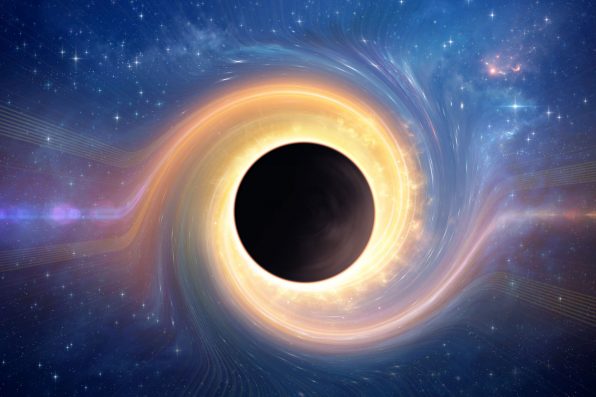At Least One Primordial Black Hole Might Fly Through Our Solar System Every Decade, And Scientists Think They May Help Solve The Mystery Of Dark Matter

Every decade or so, at least one microscopic black hole might be flying through our solar system, creating minuscule, detectable gravitational distortions.
If astronomers can confirm the existence of these gravitational distortions, their findings may help solve the mystery of dark matter.
Dark matter is not visible to the human eye, and researchers suspect that it makes up about 86 percent of all matter in the cosmos.
It has been suggested that dark matter is composed of unknown particles, but so far, experts have not identified any new particles. Therefore, it is unclear what dark matter might be made of.
Some scientists are studying primordial black holes in an effort to come up with an explanation for dark matter.
Primordial black holes have existed since the beginning of time. Previous research has indicated that they are about the mass of a typical asteroid, which is roughly 110 billion to 110 million billion tons.
“The black holes we consider in our work are at least 10 billion times lighter than the sun and are barely larger in size than a hydrogen atom,” said Sarah Geller, a co-author of the study and a theoretical physicist at the University of California, Santa Cruz.
In general, black holes emerge when a dense object collapses under the strength of its own gravity. They can remain undetected in the darkness of space unless they give themselves away by ripping apart a star.
Shortly after the Big Bang, random variations in the density of matter caused certain regions of the newborn universe to become dense enough to collapse into black holes.

mozZz – stock.adobe.com – illustrative purposes only
Primordial black holes that are still around today may make up most or all of dark matter. The new study is investigating how often primordial black holes enter our solar system and how they affect visible objects.
The gravitational pull of a primordial black hole can generate wobbles in the orbits of objects in the solar system that are large enough for scientists to measure.
They focused on examining primordial black holes that flew past the inner planets of the solar system—Mercury, Venus, Earth, and Mars.
They discovered that if primordial black holes really did exist, there may be enough of them for at least one to fly past the inner planets every 10 years.
Multiple occurrences may have already taken place before, but we just didn’t have the technology to detect them until recently.
A limitation of the study is that the findings were based on computer simulations that did not have the necessary precision to analyze data about inner solar system orbits.
“To make definitive statements, we’ll need to work with colleagues who specialize in modeling the solar system with much more sophisticated computational methods,” said Benjamin Lehmann, a co-author of the study and a theoretical physicist at MIT.
The researchers of this study hope to collaborate with the solar system simulation group at the Paris Observatory to go over existing orbital data.
The findings were detailed in the Physical Review D.
Sign up for Chip Chick’s newsletter and get stories like this delivered to your inbox.
More About:News





